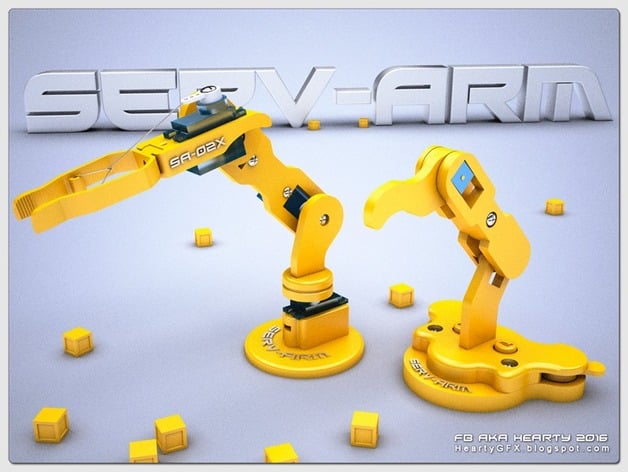
Serv-Arm
thingiverse
The text describes a project for teaching 3D printing and robotics to students. The goal of the project is to create a robotic arm that can be controlled using an Arduino microcontroller and can be printed using a 3D printer. Here are some key points from the text: 1. **Design considerations**: The design of the robotic arm needs to take into account the mechanical constraints of 3D printing, such as orientation, anisotropy, and layer height. 2. **Printing strategy**: The project aims to avoid using support structures, which can affect the surface finish of the printed parts. Instead, the parts are designed to be cut and assembled after printing. 3. **Mechanical constraints**: The design needs to anticipate the building process and take into account the mechanical limitations of 3D printing. 4. **Collaboration between classes**: The project is designed to involve multiple classes and courses, creating a collaborative learning environment. 5. **Software requirements**: Students will need access to 3D software, such as Blender or Tinkercad, as well as Arduino software for programming the microcontroller. 6. **Electronics**: The project requires an Arduino Pro Mini (or Nano with USB), servomotors, variable resistors, a push button, and other electronic components. 7. **Duration**: The project can be completed in a month if the focus is on design and printing, but it's recommended to extend it over a school year to allow for more in-depth learning. 8. **Motivation**: Students are motivated by knowing that they will keep their ArmBot at the end of the program. The project has several benefits: 1. **Hands-on learning**: The project provides a hands-on learning experience, allowing students to apply theoretical concepts to practical problems. 2. **Interdisciplinary learning**: The project involves multiple disciplines, such as design, programming, and electronics. 3. **Collaboration**: The project encourages collaboration between classes and courses. 4. **Cost-effective**: The total cost of the project is relatively low. Overall, the project aims to provide a unique and engaging learning experience for students, teaching them about 3D printing, robotics, and programming while promoting collaboration and interdisciplinary learning.
With this file you will be able to print Serv-Arm with your 3D printer. Click on the button and save the file on your computer to work, edit or customize your design. You can also find more 3D designs for printers on Serv-Arm.
